By Dan Weisz
I’ve already shared several photo emails on this family which you first met in March. That’s when I shared some photos taken of Mom in the nest about two weeks prior. Since then, the next three emails documented some behaviors of both the adults and a bit of the two owlets that hatched with the most recent email being sent this past Wednesday. I am having so much fun observing these birds and will continue sending you photos. I will follow today’s email with another tomorrow, so no waiting on your part.
On Thursday, April 29th, both adult owls were in their regular palm tree across the street from the “nest” palm. As sunset neared, the male moved to the west side of the tree as if to watch “the clock” as he prepared to go to work.
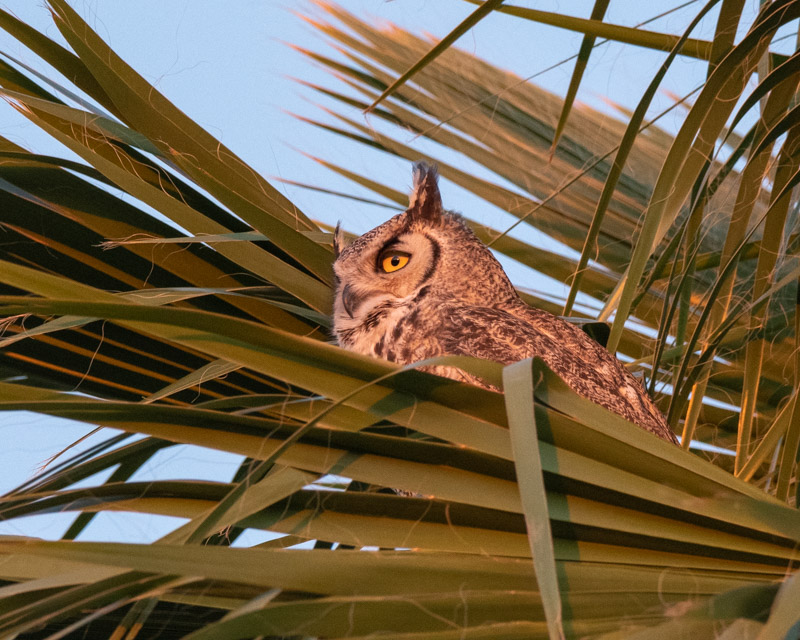
When he turned, I could see the sunset reflected in his pupils. You can see the skyline across the middle of his pupils with the sun just touching the horizon!
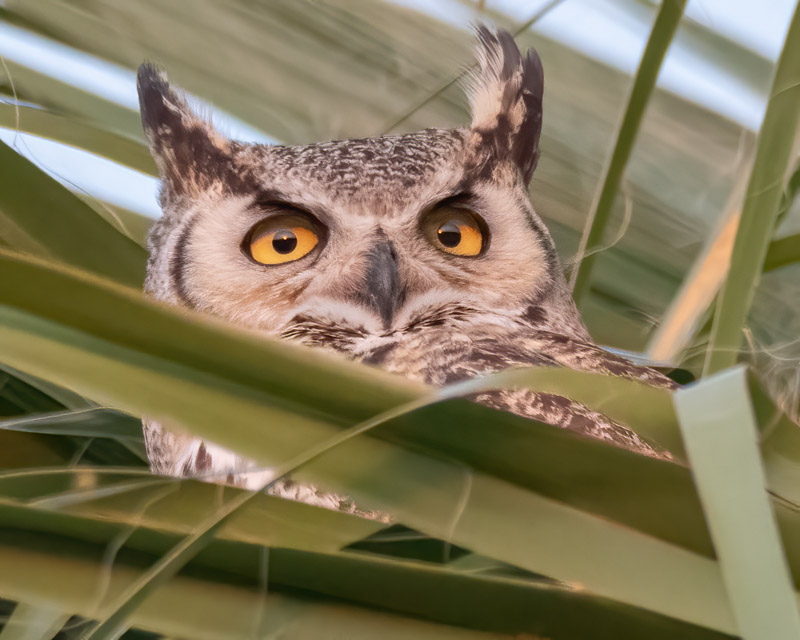
That evening both owls flew to the saguaros overlooking the valley below. Saguaros are large cacti so this gives you some perspective on the size of the owl. The mountains in the distance are the Santa Rita Mountains. A telephoto lens makes the mountains seem close but they are 70 miles to the south!!
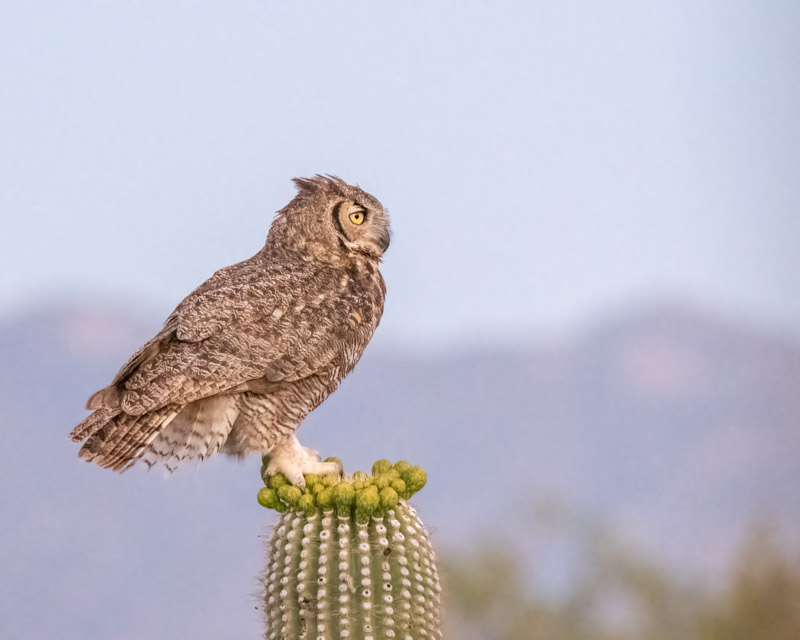
This photo shows a different saguaro and I’m not sure which Great Horned Owl this is. I like the look of the city of Tucson in the valley below as well as the Santa Ritas in the background. This saguaro top is slanted and you’ll recognize this cactus as another favorite perch to be seen in other photos over the next few days.
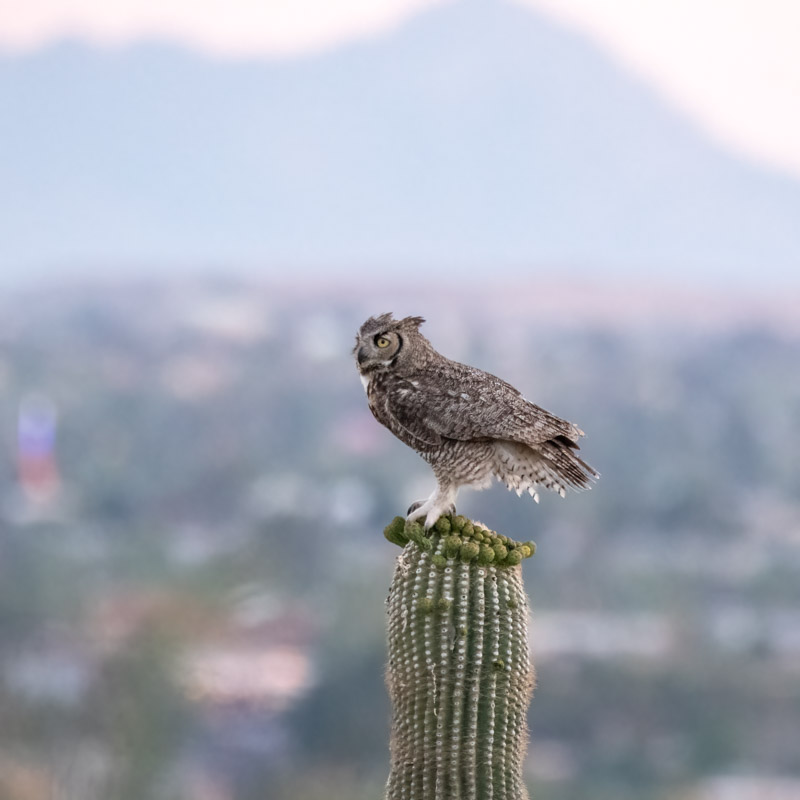
Two days later (Saturday May 1)….Both owls were roosting in the palm tree across the street during the day. As evening approached, the male again moved to a clear launching spot in anticipation of the sunset. A Great Horned Owl’s eyes are very large in order to improve their vision under low light. The eyes are not eye “balls” as such, but are more of an elongated tube. Because of the shape, can’t roll or move its eyes like we can. Its eyes are fixed in its skull so owls (and other raptors) will bob their heads from side-to-side or up and down in order to locate their prey. Birdnote explains this: https://www.audubon.org/news/why-do-owls-bob-their-heads
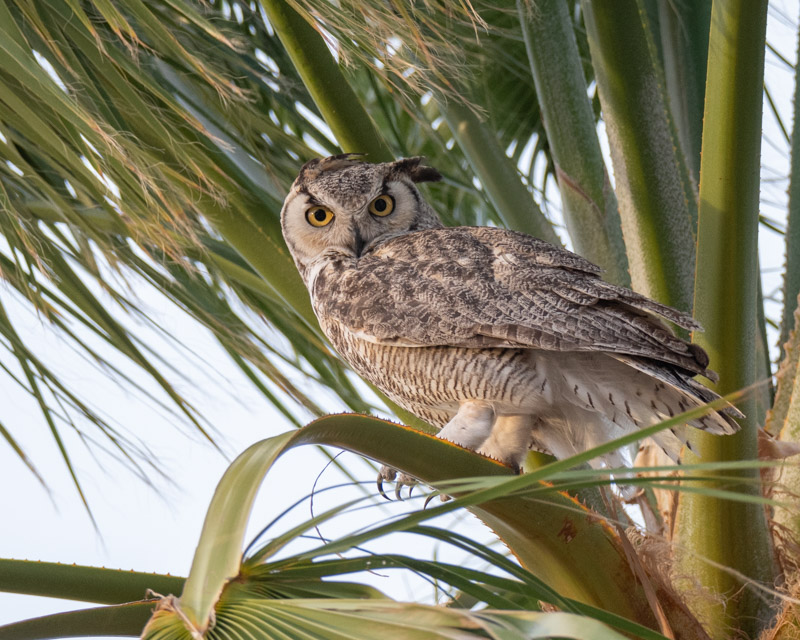
The owl flew off to a very familiar perch.
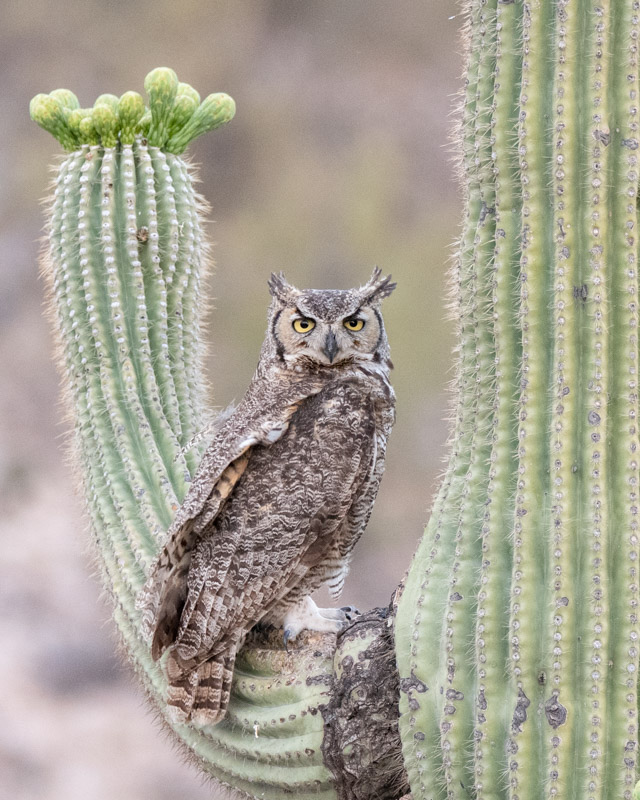
Owls, like other raptors, may ‘lighten the load’ prior to beginning to hunt. If you see this happening in a perched raptor, it likely will take off very soon afterwards. (If you must know, the white waste products were processed in the liver and kidneys and the darker wastes come from the digestive system.)
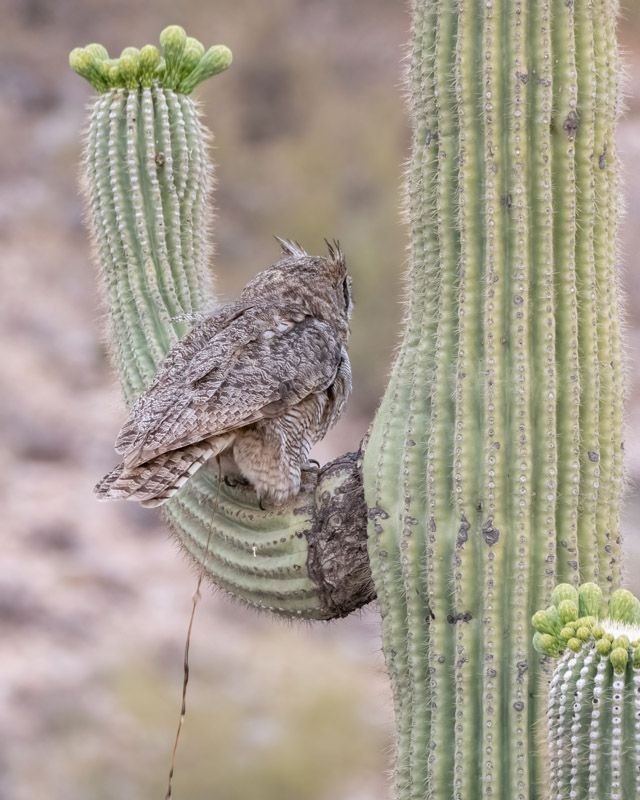
Again, I’m not sure which owl this is but remember that slanted saguaro top from two days ago? In this portrait you can easily see the Great Horned Owl’s facial disc, outlined by the black “parentheses” on either side of its face. An owl’s ears are below its eyes and back a little bit and the facial disc feathers help move all sound within the concave disc to the owl’s ears. Great Horned Owls use excellent vision and hearing to find their prey. (A reminder that those feather tufts on top of a Great Horned Owl’s head have nothing to do with the bird’s ears or hearing.)
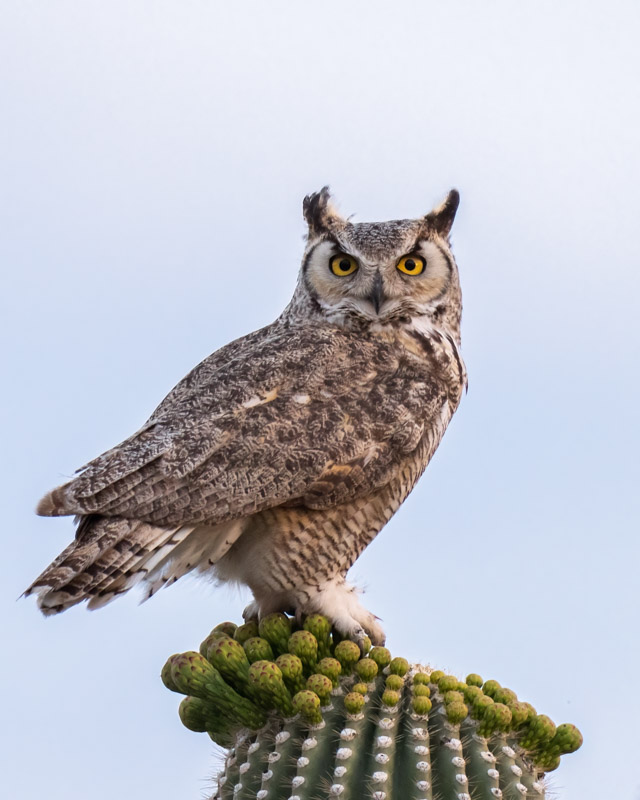
A Great Horned Owl can very easily turn its head towards the back. In fact it can turn its head 270° from forward position to either side in order to see. For an article on how owls can manage to do this, you can either go to a Children’s Museum https://www.childrensmuseum.org/blog/why-do-owls-rotate-their-heads or to this piece from the Smithsonian to find the answers: https://www.smithsonianmag.com/science-nature/solving-the-mystery-of-owls-head-turning-abilities-9561557/
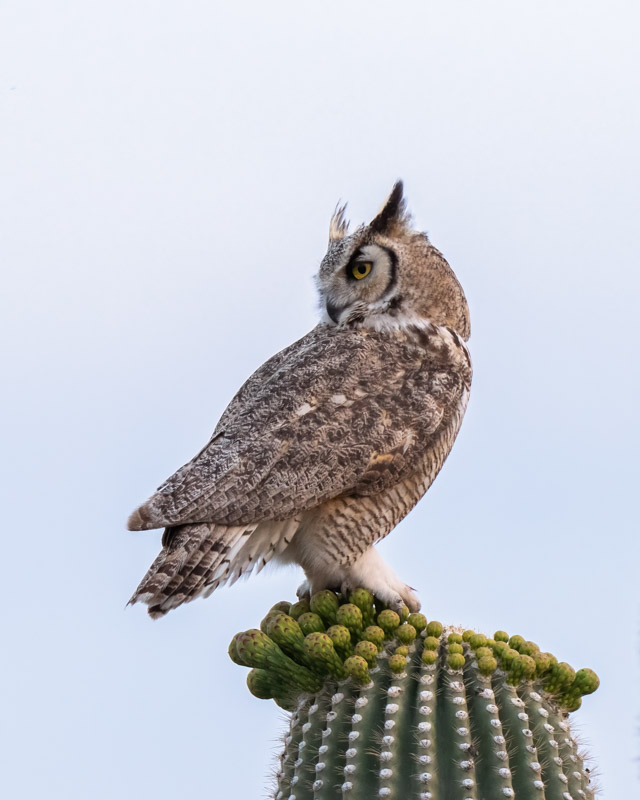
To hear the sound of Great Horned Owls, listen to Birdnote one more time:
